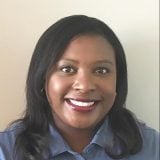Saving Big When Your Cash Stash Is Small
Save consistently and maximize interest to grow your savings.

Many, or all, of the products featured on this page are from our advertising partners who compensate us when you take certain actions on our website or click to take an action on their website. However, this does not influence our evaluations. Our opinions are our own. Here is a list of our partners and here's how we make money.
If your savings fund balance isn’t currently where you want it to be, don’t be discouraged. Having any amount saved for an emergency, no matter how small, means you’ve already taken the most important step to protecting yourself from a financial setback.
The next step is also important — maximize how much your money grows. Here’s how you can do it.
Put your funds in a high-yield account
Maximizing the interest you earn in emergency savings is crucial. These days, some of the best high-yield savings accounts have an annual percentage yield, or APY, of more than 5%. At that rate, you’d earn $5 in interest for every $100 deposited. That’s definitely having your money work for you.
A lot of people are earning far less interest on their savings. The national average savings rate is only 0.46% as of April 15, 2024, according to the Federal Deposit Insurance Corp. With that percentage, you earn less than 50 cents for every $100 in an account over the course of a year.
It is worth noting that savings rates can change at any time, so you’re not guaranteed to earn 5% forever. But you can capitalize on that high APY for as long as possible. And even when overall rates eventually dip, you’re still better off putting your money in a high-yield account. Those accounts tend to consistently offer better rates than their low-yield competition.
Review your budget
Once your money is working for you in a high-rate account, take a look at your last few bank and credit card statements and see if you can squeeze a little more to stash away. For example, if you’re paying monthly bank fees, switch to a bank that doesn’t charge monthly fees.
Monthly subscriptions could be another area to trim. According to a 2022 study from market research firm C+R Research, 42% of respondents admit they “stopped using a subscription service(s) but forgot they were still paying for the service.” If that applies to you, canceling one or more subscriptions you don’t use would be like finding free money.

Play the bonus game
Cutting back on spending isn’t the only way to come up with extra cash. If you’re planning to switch banks (say, after reading the advice above), you could find one that offers a bonus for opening a new account. There may be some requirements, such as setting up direct deposit, but if you qualify, it’s a nice way to give your savings a boost.
Set and forget savings bumps with auto transfers
Commit to setting money aside regularly. The amount isn’t as important as the consistency. To make it easier, set up an automatic transfer from checking to savings at regular intervals. If you deposit $45 a month (savings from a few canceled streaming subscriptions, maybe?), you would save $540 after a year. And with that money in a high-yield account, your actual bank balance would be higher. You can use a savings calculator to figure out exactly how much you can save, based on the interest rate and how much you put away each month.
Jump-start your savings habit with a challenge
You could also build your emergency fund in a more hands-on way with the 52-week money challenge. This is a strategy for starting small and building the savings habit as time goes on. You save a specific amount of money each week, starting with $1 and increasing the figure by $1 with each deposit. In a year, you would save over $1,300.
Celebrate early
Building your savings balance will likely be more a marathon than a sprint, so it’s important to celebrate passing mile markers along the way. Did you save consistently for two months? That’s a win! Did you reach a savings milestone? Hooray! Wins can help motivate you to keep going.
By saving consistently and maximizing interest, you can boost your cash cushion and take solid steps to protect your financial future.

